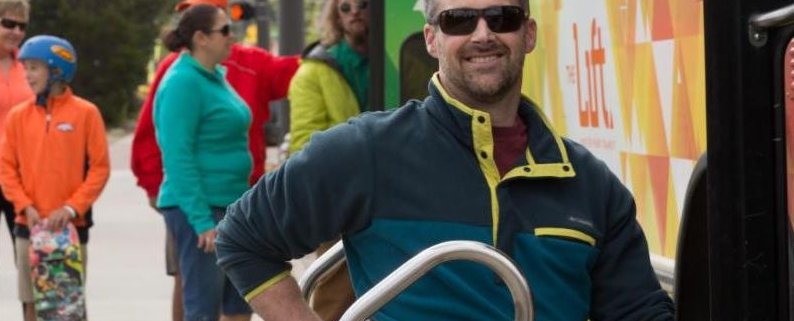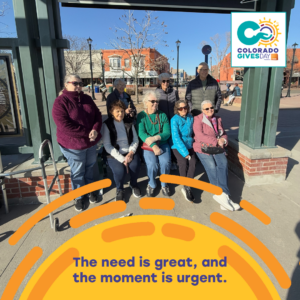- bringing seniors to a census event
- providing free rides into town to a census kiosk
- encouraging your employees to fill out the census for their family
- Check out the slides to find ways to encourage those in your agency and community to respond to the 2020 Census.
Did you know: Rural Colorado was undercounted by 40% in 2010 when the last Census was taken leaving millions of dollars on the table???
They’re not just throwing darts. While RTD’s choices of routes to consider reducing may seem cold or arbitrary to the communities and commuters losing service, the recommendations are made by […]
- Location: 515 Coffman Street, Longmont, CO 80501 (Room 112S)
- Introductions
- Meet every month 2:00pm-4:00pm
- Even months – Longmont
- Odd months – Boulder
- RTD
- Access a Ride (AaR) Discussion
- Certification process
- Contracted out to Easter Seals
- Paperwork must be done
- Doctor must sign paperwork
- Sometimes an indoor/outdoor assessment must be done
- Medicaid has different process
- They see disability as a %
- RTD looks at the ability to get from point A to point B
- Functional assessment
- Two levels of eligibility
- Unconditional – always get ride no matter what
- Conditional – only to unfamiliar locations, might be able to have AaR when weather conditions warrant
- Contracted out to Easter Seals
- Is there a way for Boulder to get a facility to do the assessments?
- It is a very long way for Boulder residents to travel to Easter Seals
- Possibly through grant money
- Another facility would HAVE to have consistency with the Easter Seals process
- NOTE: RTD will be doing another set of bids for who will contract this certification process in the future
- Opinion from Boulder LCC: RFPs should HAVE to include AT LEAST travel dates to outer locations (North and South of Metro Denver)
- People in Boulder are opting into Via because the process is easier…but they are limiting their travel abilities
- People consider Via a premium service because their customer service is great
- It’s important to remember RTD’s AaR program is a safety net service
- Opinion from Boulder LCC – making AaR application easier is important because people are opting for other services because ease of use. BUT funding dollars are being drained from nonprofits because they are over used when people don’t want to go through AaR application process
- AaR provided 10,135 trips in Longmont in 2019
- Would like to see what Via’s numbers were
- Certification process
- Access a Ride (AaR) Discussion
- Medicaid
- Health Care Policy & Finance (HCPF) – Speaker: Mallory Cyr
- What is NEMT (Non-Emergent Medical Transportation)
- YES – To & from medical appointments
- NO – Transportation for community events like grocery, concert, etc.
- In the state of Colorado we have a broker
- Now it’s IntelliRide – used to be Veyo
- Services the metro area
- Other counties administer in their own way
- In 2020 they’re changing it to a statewide brokerage
- To provide consistency
- RFP is currently posted
- Now it’s IntelliRide – used to be Veyo
- Handoff from Veyo to IntelliRide was messy
- Part of the issue was record transitions
- Data was incorrect
- What are the performance metrics?
- Regular reports submitted to HCPF
- Missed Rides
- Wait times
- Regular reports submitted to HCPF
- Part of the issue was record transitions
- What HCPF and IntelliRide are asking people to do when submitting complaints
- BE DETAILED
- Give as much info as possible
- This will give quicker response times
- Remember: IntelliRide is NOT the actual transportation provider
- They manage a database of providers
- IntelliRide booking app
- EcoLane
- IntelliRide will send a passcode to log in the first time – Must go through them to start it
- When your ride gets close it will ping you
- Not perfect – but helpful
- EcoLane
- NEXT MEETING
- Monday 3/9/2020
- Location: 2525 13th Street, Boulder, CO 80304
- Time: 2:00pm-4:00pm
Location: Seniors’ Resource Center – 3227 Chase St., Wheat Ridge, CO (3rd Floor Conference Rm)
- Dawn will step down as Chair effective in March. Joe Lamars has said that he would like to replace her. Currently no one else has volunteered, and if there are no other candidates, Joe will become the Chair of the group effective in April.
- Charley Able, Lakewood City Council Ward 1 member is working to improve sidewalks in Lakewood. The City Council has identified 6 priorities for 2020, Pedestrian/Bicycle Safety is #6.
- 2020 Direction:
- Possibly separate the Jeffco LCC from the Aging Well Project?
- Need to shorten the strategic plan developed by the Aging Well Project from five pages to one page.
- Continue meeting with RTD Board members whose districts include Jefferson County.
- By letter, Joe Lamars told the group more about the Aira APP “Aira is a service that connects blind and low-vision people to highly trained, remotely-located agents. Through an app on your smartphone, or through an optional pair of Horizon Smart Glasses, Aira delivers instant access to visual information at the touch of a button – enhancing everyday efficiency, engagement, and independence. Straightforward and simple.”
- Ed Neuberg is developing a pilot program with RTD Business partners to offer WiFi for AIRA users in places like Union Station where the RTD pays the per-minute cost instead of the user. Several cities in the US that have programs like this. Joe Lamars will tell us in more detail the next time he’s at the meeting.
- Next meeting is March 5th at the same location.
The Denver Streets Partnership is partnering with Denver Community Active Living Coalition to host bimonthly meetings where you can learn more about how to get involved with events and projects focused on improving active transportation in Denver! The next meeting’s discussion topic is “Climate Change in Denver – Opportunities for Building Resilience.” The City of Denver is engaging the public over the next six months to better understand how we might implement initiatives to minimize the impacts of climate change in our own city. These initiatives will help us create a more sustainable future by drastically reducing emissions and developing strategies to be better prepared and more resilient when climate catastrophes strike such as severe hail storms, dangerous wildfires that cause poor air quality, and dramatic temperature fluctuations. The impacts of climate change will look different across the U.S. and throughout the world. We will face unique challenges in the City of Denver, which also means we have the opportunity to respond locally, creatively and effectively as a city.
Next Meeting:
Wednesday, Feb 12, 5:30 pm – 6:30 pm
La Alma Rec Center, 1325 W 11th Ave
![DRMAClogo[1] DRMAC](https://drmac-co.org/wp-content/uploads/2019/12/DRMAC20logo1.jpg)





